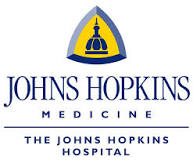Assessing Cerebral Blood Flow Autoregulation During Surgery in the Head-up Position
| Status: | Completed |
|---|---|
| Conditions: | Orthopedic |
| Therapuetic Areas: | Orthopedics / Podiatry |
| Healthy: | No |
| Age Range: | 18 - Any |
| Updated: | 4/21/2016 |
| Start Date: | July 2010 |
| End Date: | April 2015 |
Assessing Cerebral Blood Flow Autoregulation in the Head-up Versus Supine Position During General Anesthesia and Its Relationship With Postoperative Neurocognitive Changes and Serum Biomarkers of Brain Injury
Neurological injury after elective shoulder surgery in the beach chair position is thought
to result from cerebral hypoperfusion and should therefore be preventable by appropriate
hemodynamic monitoring and management. This proposal will use a system to continuously
monitor cerebral blood flow autoregulation to identify safe arterial blood pressure targets
in patients in the beach chair position, compared with a control cohort having orthopedic
surgery in the lateral decubitus supine position. Autoregulation data will be compared
against a new, highly specific and sensitive serum biomarker of neurologic injury, glial
fibrillary acid protein, and postoperative neurocognitive testing results.
to result from cerebral hypoperfusion and should therefore be preventable by appropriate
hemodynamic monitoring and management. This proposal will use a system to continuously
monitor cerebral blood flow autoregulation to identify safe arterial blood pressure targets
in patients in the beach chair position, compared with a control cohort having orthopedic
surgery in the lateral decubitus supine position. Autoregulation data will be compared
against a new, highly specific and sensitive serum biomarker of neurologic injury, glial
fibrillary acid protein, and postoperative neurocognitive testing results.
Neurologic injury under general anesthesia in the beach chair position is believed to result
from cerebral hypoperfusion.1 We hypothesize that brain hypoperfusion in this circumstance
is caused by blood pressure monitoring that does not reflect of cerebral perfusion pressure.
Maintenance of arterial blood pressure above an individual's lower limit of cerebral blood
flow autoregulation would prevent this devastating complication. Near infrared spectroscopy
can be used to continuously monitor autoregulation with the cerebral oximetry index (COx), a
moving linear correlation coefficient between cortical tissue oxygen saturation and arterial
pressure. We hypothesize that subjects in the beach chair position have impaired cerebral
blood flow autoregulation compared with subjects undergoing surgery in the lateral decubitus
supine position. We will test this hypothesis by comparing CBF autoregulation data,
including the percentage of time patients undergoing elective surgery have abnormal
autoregulation, in the beach chair position versus supine position. We will establish the
range of arterial pressure required to maintain autoregulation in the two groups. Cerebral
autoregulation results will be assessed for a relationship with postoperative neurocognitive
dysfunction and with serum glial fibrillary acid protein levels, a biomarker of brain
injury.
The specific aims of this study are:
1. To compare the average cerebral oximetry index and the percentage of time with abnormal
COx between subjects in the head up or supine position during surgery under general
anesthesia.
2. To compare the range of arterial blood pressure required for a normal cerebral oximetry
index between subjects anesthetized in the head up or supine position.
3. To assess the association between impaired cerebral blood flow autoregulation and
postoperative neurocognitive decline 1 month after surgery and perioperative elevation
of serum glial fibrillary acid protein.
Monitoring autoregulation non-invasively with COx has the potential to improve patient
safety by delineating individualized limits of safe ABP for patients at risk of neurologic
injury.
from cerebral hypoperfusion.1 We hypothesize that brain hypoperfusion in this circumstance
is caused by blood pressure monitoring that does not reflect of cerebral perfusion pressure.
Maintenance of arterial blood pressure above an individual's lower limit of cerebral blood
flow autoregulation would prevent this devastating complication. Near infrared spectroscopy
can be used to continuously monitor autoregulation with the cerebral oximetry index (COx), a
moving linear correlation coefficient between cortical tissue oxygen saturation and arterial
pressure. We hypothesize that subjects in the beach chair position have impaired cerebral
blood flow autoregulation compared with subjects undergoing surgery in the lateral decubitus
supine position. We will test this hypothesis by comparing CBF autoregulation data,
including the percentage of time patients undergoing elective surgery have abnormal
autoregulation, in the beach chair position versus supine position. We will establish the
range of arterial pressure required to maintain autoregulation in the two groups. Cerebral
autoregulation results will be assessed for a relationship with postoperative neurocognitive
dysfunction and with serum glial fibrillary acid protein levels, a biomarker of brain
injury.
The specific aims of this study are:
1. To compare the average cerebral oximetry index and the percentage of time with abnormal
COx between subjects in the head up or supine position during surgery under general
anesthesia.
2. To compare the range of arterial blood pressure required for a normal cerebral oximetry
index between subjects anesthetized in the head up or supine position.
3. To assess the association between impaired cerebral blood flow autoregulation and
postoperative neurocognitive decline 1 month after surgery and perioperative elevation
of serum glial fibrillary acid protein.
Monitoring autoregulation non-invasively with COx has the potential to improve patient
safety by delineating individualized limits of safe ABP for patients at risk of neurologic
injury.
Inclusion Criteria:
- Patients 18 years old or older undergoing shoulder arthroscopy in the beach chair
position or lateral decubitus position without elevation of the head.
Exclusion Criteria:
- Women of child bearing potential require a negative urine HCG test to be enrolled.
Patients unable to attend postoperative cognitive testing sessions will be excluded
from the study as will those with known allergy to adhesive tape.
We found this trial at
1
site
Johns Hopkins Hospital Patients are the focus of everything we do at The Johns Hopkins...
Click here to add this to my saved trials
